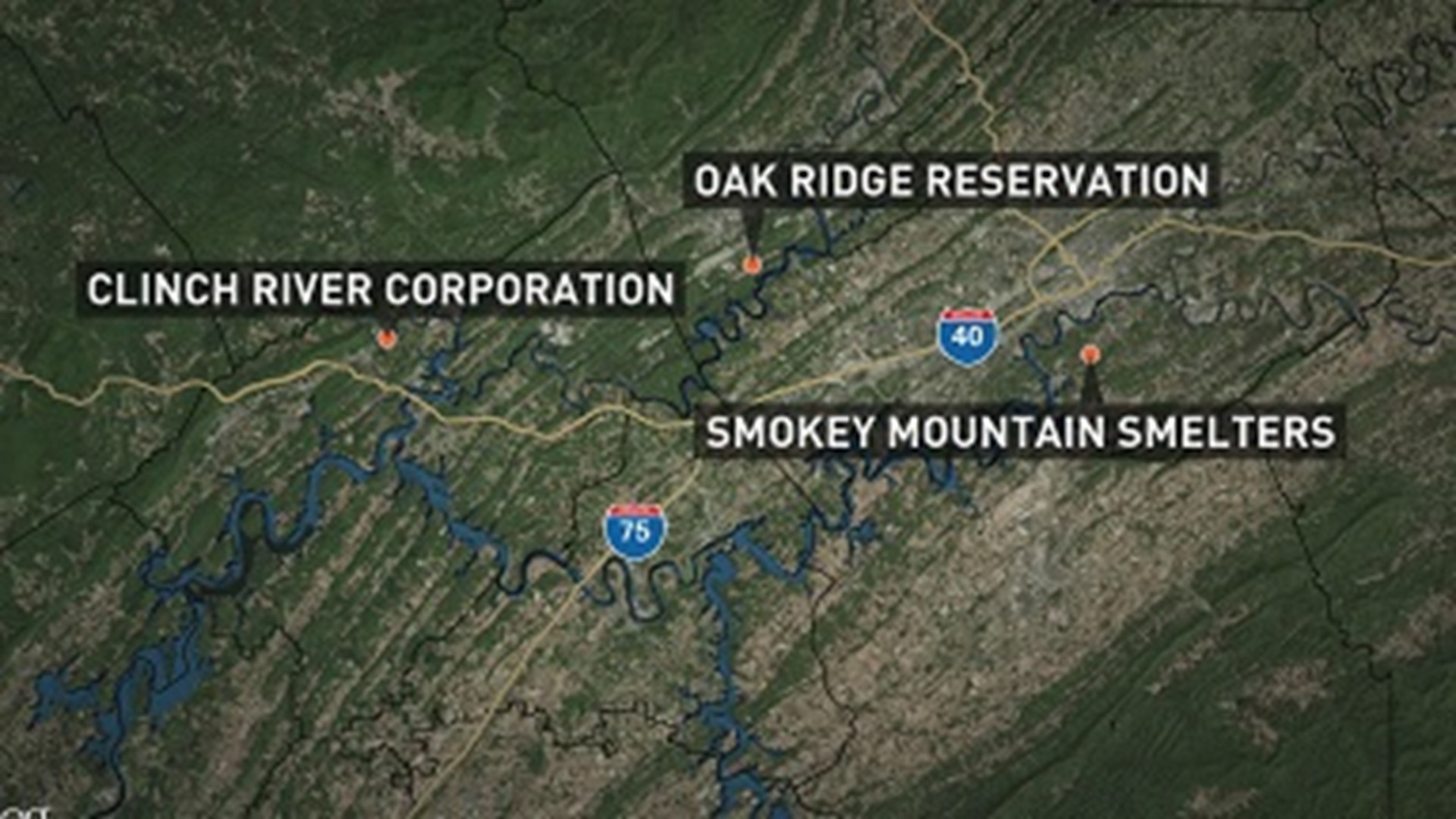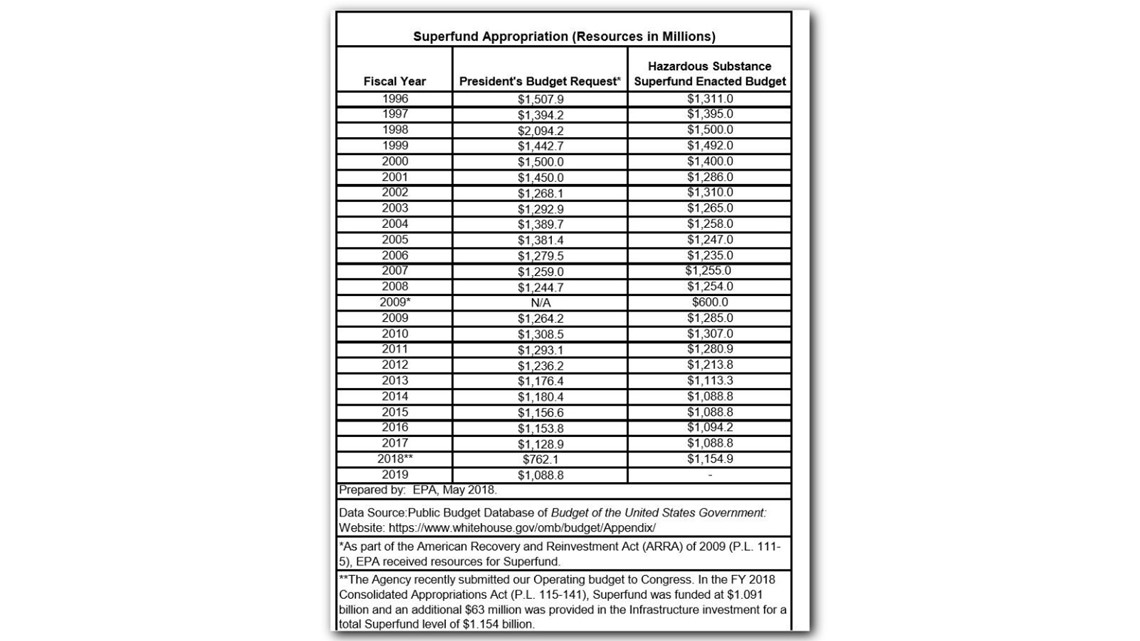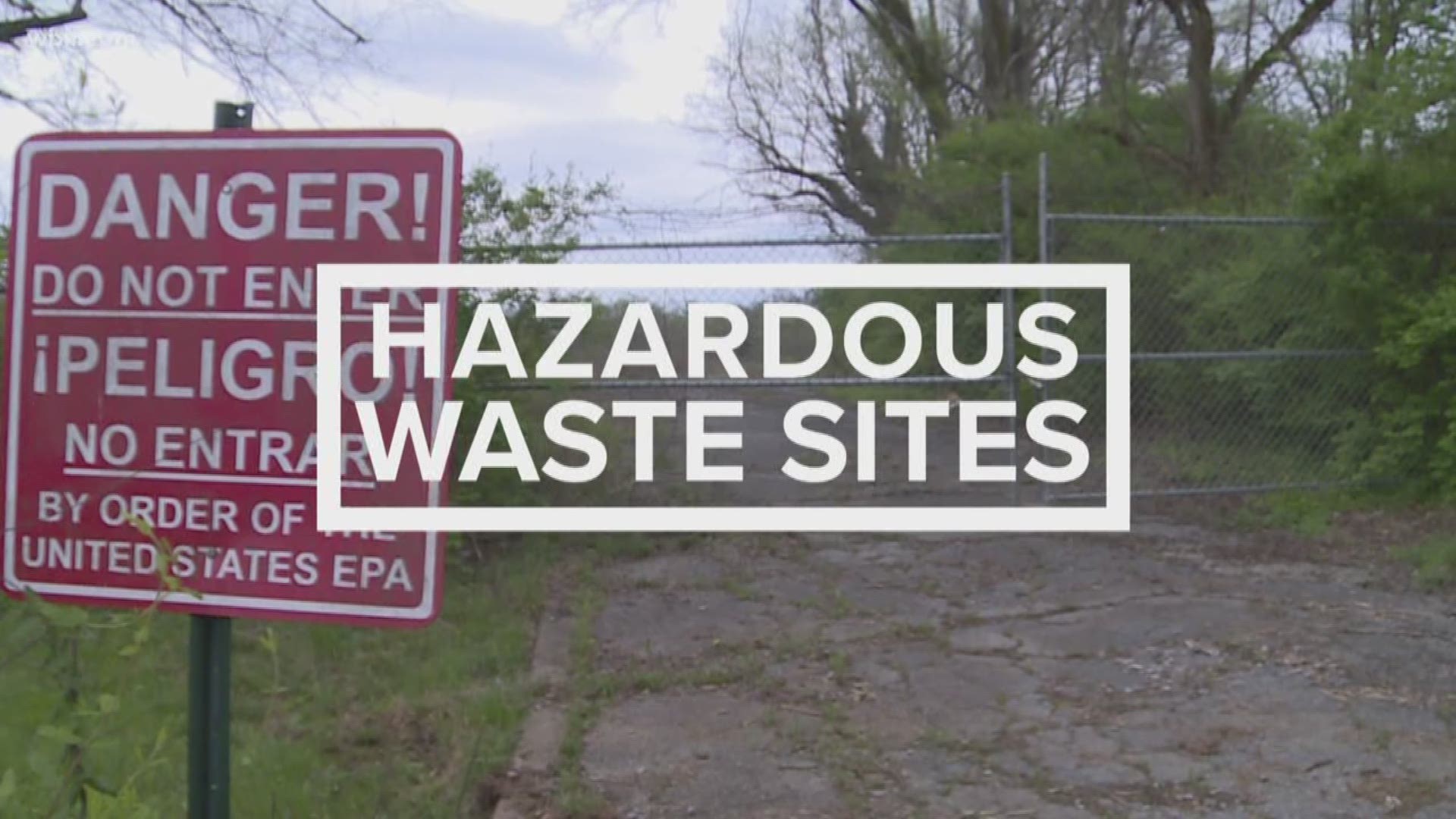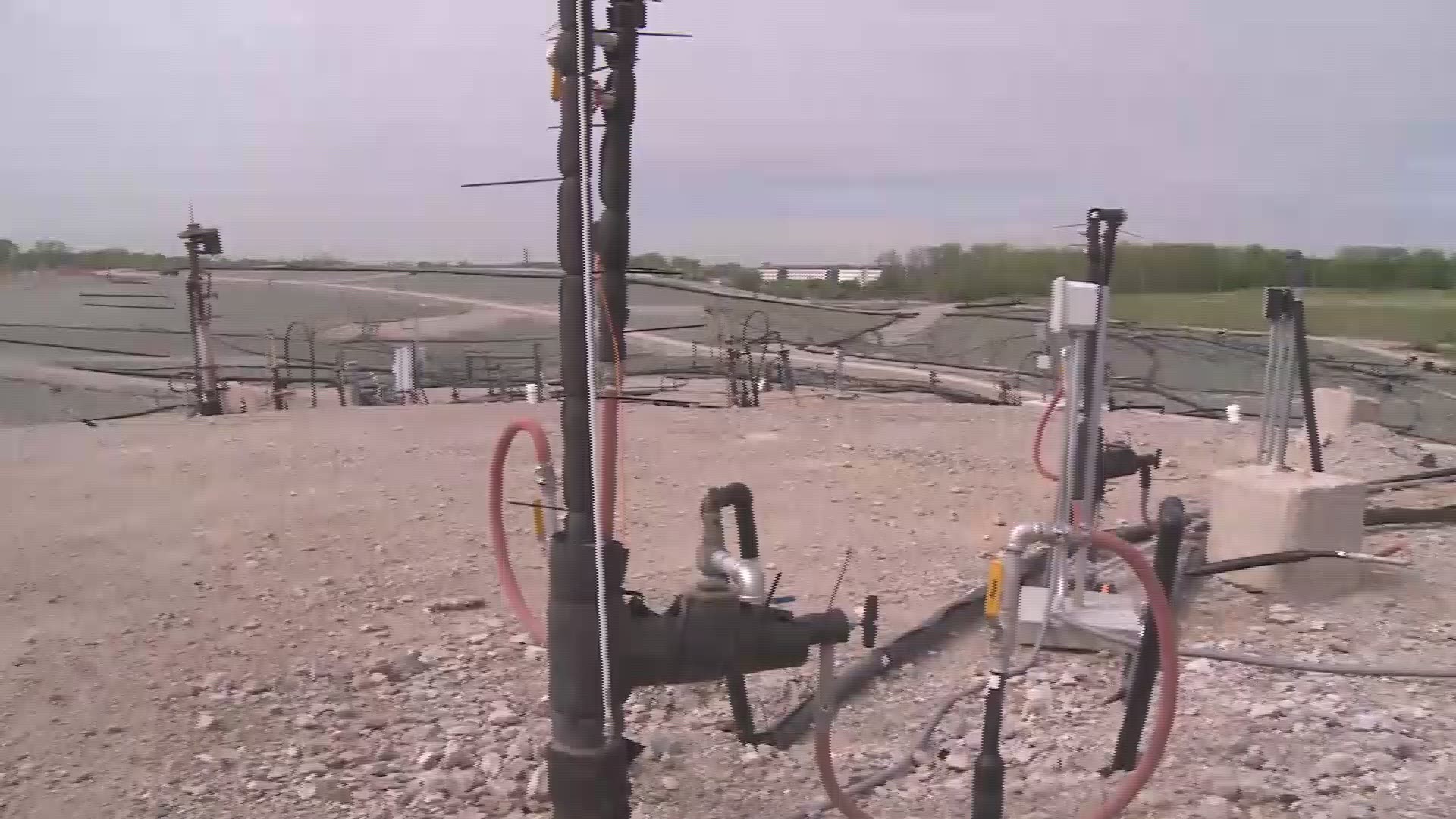Hazardous Waste: Cleanup, cost and complications for the Superfund sites of East Tennessee
A radioactive landfill in north suburban St. Louis has terrorized the community. The landfill is an EPA-designated Superfund site, an area with hazardous material that could threaten human health or the environment. 10News wanted to learn more about its own three Superfund sites in East Tennessee. Each day 10News will profile each site in chapters on this webpage.

If viewing on the WBIR app, click HERE for the best story experience.
A radioactive landfill has petrified the communities in and around St. Louis, Missouri.
The West Lake Landfill contains Manhattan Project radioactive waste that was illegally dumped there in the 1970s, WBIR's sister station KSDK reports.
Lawsuits allege high levels of radioactive contamination have spread to homes and a nearby creek, around which KSDK found there are increased cancer rates among residents, including appendix cancer, which is linked to radiation exposure.
To boot, there is also an underground fire burning a couple hundred yards away from the landfill, according to a report by the St. Louis Post-Dispatch.
10News wanted to learn more about its own three Superfund sites in East Tennessee. Each day 10News will profile each site.
ATOMIC HOMEFRONT
The site gained more notoriety when in February HBO released a documentary called “Atomic Homefront,” which profiles the West Lake Landfill and the community outrage it has provoked.
Also in February, EPA Administrator Scott Pruitt promised to remove most of the waste within five years.
The West Lake Landfill is so dangerous that in 2017, the EPA put it on a list of 22 sites “targeted for immediate and intense action.”
WHAT IS A SUPERFUND SITE?
According to the Department of Health and Human Services, a Superfund site “is any land that has been contaminated by hazardous waste and identified by the EPA as a candidate for cleanup because it poses a risk to human health and/or the environment.”
According to the EPA, there are 1,341 Superfund sites in the United States. 55 more are proposed to be added to the National Priorties List, or the Superfund list. 399 have been fully cleaned up since the program began in the early 1980s.
The sites are generally old factories or industrial facilities where hazardous waste has been put in the ground, dumped in the water or otherwise mismanaged.
10News wanted to learn more about the Superfund sites in East Tennessee.
According to the EPA, there are three sites: the Oak Ridge Reservation, the Clinch River Corporation in Roane County and Smokey Mountain Smelters in Knox County.


To be clear, these three sites are not like the West Lake Landfill, but each of them have unique cleanup plans and priorities.
All this week 10News will profile each of the sites, show you where they stand in the cleanup process and help evaluate human risk.
FIND SUPERFUNDS WHERE YOU LIVE
Navigate an interactive map on the EPA's website.
You can look up every Superfund site in the United States on the EPA website here.
It also lists their contaminants, the health risks, and contact information for the EPA site supervisor.
SUPERFUND LAW
In 1980, Congress enacted the Comprehensive Environmental Response, Compensation and Liability Act, (CERCLA) which is also called Superfund law.
This law allows the EPA to go in and clean up the hazardous waste at Superfund sites.
It also forces the people or businesses responsible for the hazardous material to clean up the site or at least pay for it. Those people or businesses are called the “Potentially Responsible Party” or PRP.
If the EPA cannot find the Potentially Responsible Party, it must tap into the Superfund Trust Fund or other federally appropriated money.
THE COST
When Superfund law was first enacted, it was funded in part by taxes on oil and petrochemical companies.
From 1980 to 1985 those taxes created a $1.6 billion trust fund for the Superfund program.
In 1986, that trust fund was increased to $8.5 billion. The taxes expired in 1995.
Now, the program relies on annual appropriations and money from PRPs.
According to the EPA, the Superfund trust fund had $67.1 million as of September 2017.
The EPA said it currently has $3.2 billion in site-specific accounts which are settlement payments from PRPs that can only be used for a specific site.
Additionally, the Superfund program received $1.15 billion from Congress for fiscal year 2018. The program’s proposed budget for fiscal year 2019 is $1.089 billion.
Congress has given less and less to the Superfund program over the years.


According to a 2015 Government Accountability Office report, site cleanup has declined by 37 percent from 1999 to 2013.
MAKING THE LIST
The EPA has a Hazard Ranking System to help identify Superfund sites.
The site numerically categorizes the threat to human health or the environment.
If the system score is 28.5 or above, it is classified as a Superfund site.
Anyone can notify the EPA about a site they believe has contamination that could threaten human health or the environment.
Then sites can undergo several levels of investigation before they are deemed a Superfund site.
Once that status is established, the EPA works with local and state government groups to determine a plan to clean up the site. It also publishes the site in the Federal Register and issues a public notice to the communities to solicit comments or involvement in the cleanup process.
This process can often take years, as is the case for the three East Tennessee sites.
COMPLICATIONS IN WASHINGTON
In April, Congress scrutinized EPA Administrator Scott Pruitt for inappropriate spending in office.
Additionally, in early May, several top EPA aides resigned, including Albert Kelly, who headed the Superfund Task Force.
The Task Force was established in May 2017 to reinvigorate the office’s commitment to the program.
“I am making it a priority to ensure contaminated sites get cleaned up,” Pruitt said in a May 2017 EPA news release. “We will be more hands-on to ensure proper oversight and attention to the Superfund program at the highest levels of the Agency, and to create consistency across states.”
OTHER CLEANUPS
For the purposes of this story, 10News only looked into the three Superfund sites of East Tennessee.
But EPA-designated Superfund sites are not the only types of contaminated sites or cleanups throughout the United States.
For instance, there are state-designated Superfund sites. And there are also plenty of local cleanups, which you can look up on the EPA’s map here.
The EPA treated the 2008 TVA Coal Ash Spill as a Superfund site for its cleanup, but it is not listed as a Superfund site.
SUCCESSFUL TRANSFORMATIONS
Some Superfund sites have been deleted from the list.
To be deleted from the list, all cleanup goals have to be met and the EPA must designate a period for public comment. Once the comment period ends and the site still qualifies for deletion, the EPA submits the action to the Federal Register.
An example of this is the Amnicola Dump in Chattanooga. It was put on the list in 1983 and after cleanup, was deleted in 1996. Now the site has commercial properties including a restaurant.
But not all Superfund sites have to be deleted from the list in order to be put back into community use.
For instance, the East Tennessee Technology Park, formerly known as the K25 site, on the Oak Ridge Reservation has more than 20 businesses operating there. The site also has a 3,000-acre nature preserve and plans for Manhattan Project National Park are in the works.


